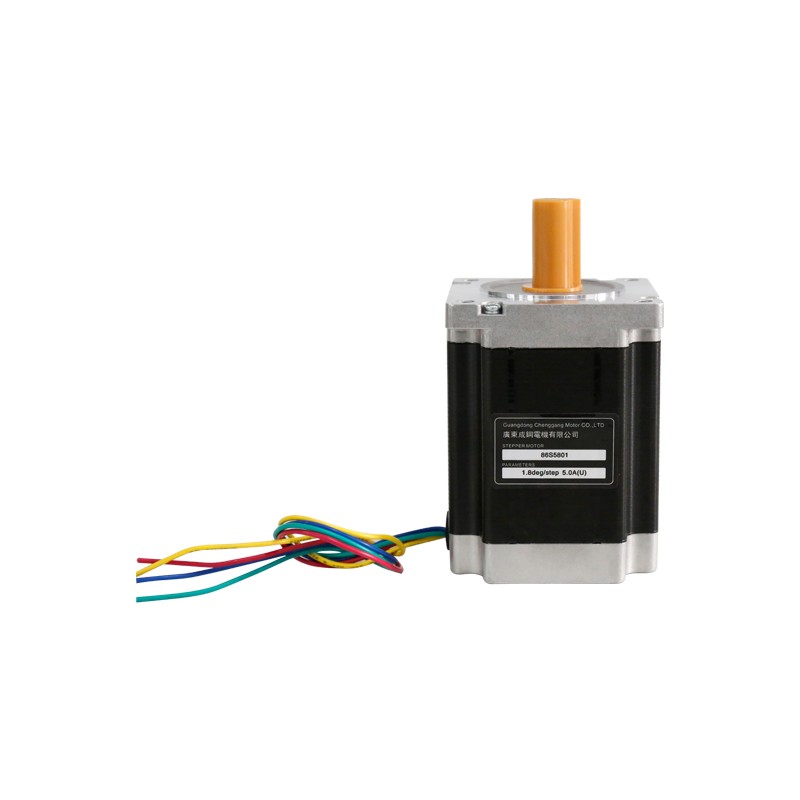Source:Industry News Release time:2022-06-15 Clicks:0 Popular:Reduction motor manufacturer

The rotor of the screw stepper motor is a permanent magnet. When current flows through the stator winding, the stator winding generates a vector magnetic field. The magnetic field causes the rotor to rotate at an angle so that the rotor's magnetic field aligns with the direction of the stator's magnetic field. When the vector magnetic field of the stator rotates through an angle. The rotor also rotates at an angle to the magnetic field. Every time an electrical pulse is input, the motor rotates forward by an angle. The output angular displacement of the screw stepper motor is proportional to the number of input pulses, and the rotational speed is proportional to the pulse frequency. Change the order in which the windings are energized and the motor will reverse direction. Therefore, by controlling the pulse number, frequency and energization sequence of each phase winding of the stepper motor, the rotation of the stepper motor can be controlled.
The heating principle of a screw stepper motor is usually found in various motors, with an iron core and a winding coil inside. The winding resistance is large, and loss will occur when power is supplied. The size of the loss is proportional to the square of the resistance and the square of the current. If the current is not a standard DC or sine wave, harmonic losses will also occur; the iron core has a hysteretic eddy current effect, which causes Loss will also occur in the variable magnetic field, and its size is related to the material, current, frequency, and voltage. This is called core loss. Screw stepper motors generally pursue positioning accuracy and torque output. They have relatively low efficiency, large current, and high harmonic components. The AC frequency also changes with the change of speed, so the heating of stepper motors is relatively common. And the situation is more serious than that of ordinary AC motors.
Use of screw stepper motor:
1. When the screw stepper motor is working, each phase winding is not continuously energized, but is energized in sequence according to certain rules.
2. The stepper motor can control the angle and speed according to specific instructions. Angle control, every time a pulse is input, the stator winding changes once, the output shaft will rotate an angle, the number of steps is consistent with the number of pulses, and the angular displacement of the output shaft rotation is proportional to the input pulse. When adjusting the speed, the stepper motor windings form continuous pulses, each phase winding continues to rotate current, and the stepper motor rotates continuously, and its speed is proportional to the pulse frequency.
3. The stepper motor has self-locking ability. When the control pulse stops input and the winding controlled by the previous pulse continues to DC, the motor can be kept at a fixed position, that is, it stops at the end of the angular displacement controlled by the previous pulse.
Recommended reading
Working principle and application analysis of screw stepper motor
Related Information
Stepper motor
2021-04-14Stepper motor
2020-12-21CGF-042L1-8-P2
2020-12-21Planetary reducer
2021-04-15CGXZ115
2021-01-13Stepper motor
2021-04-14CGX142
2021-01-13Rod motor
2021-04-17CGX085
2021-01-13Planetary reducer
2020-12-21Stepper motor
2021-04-14CGXZK115
2021-01-13CGH-090L1-10-P1
2020-12-21CGX142
2021-01-13CGXZK142
2021-01-13CGX085
2021-01-13Speed motor
2020-12-21Planetary reducer
2021-04-15